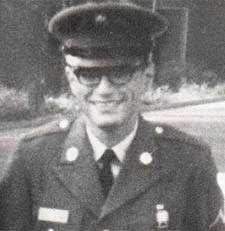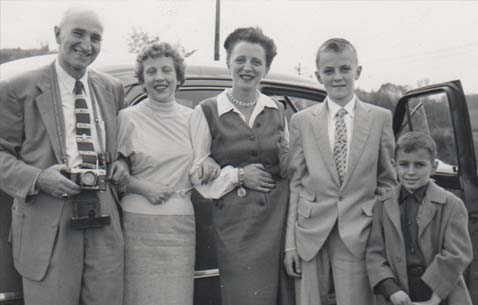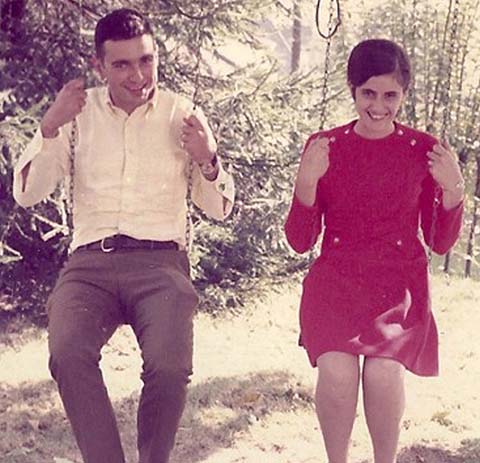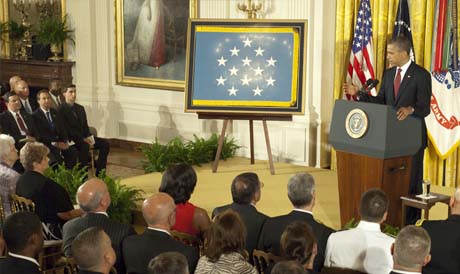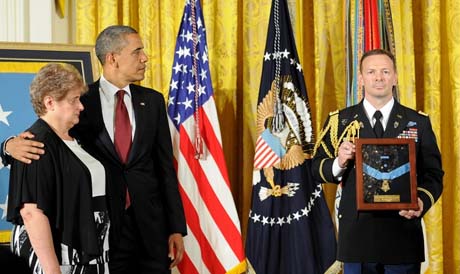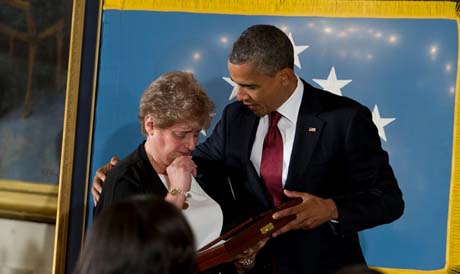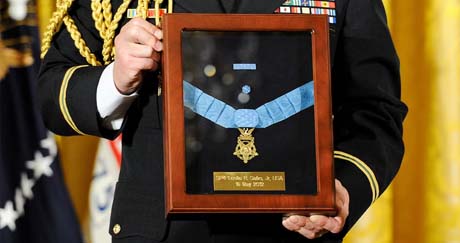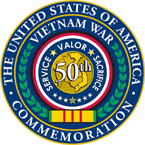Honoring a Call of Duty
As part of an immigrant family, Specialist Leslie Sabo Jr. is a shining example of those who are willing to fight for their adopted country. His efforts to save his fellow soldiers during the Vietnam War earned him the Medal of Honor decades after his death. Sabo was born in Kufstein, Austria, on Feb. 23, 1948, only a few years after World War II ended. His family fled to the United States when he was 2 to escape the Soviet takeover of Eastern Europe. They moved to Ellwood City in western Pennsylvania, where Sabo grew up. Sabo was known to many as being kindhearted, hardworking and dependable.
Sabo family photo. At the end of World War II, Sabo's family escaped from their native Hungary to Austria fleeing the Soviet army and communism. When Leslie was 2, the family immigrated to the United States, where their father, who had practiced law in Hungary, went to night school at the age of 43 and became an engineer. Photo courtesy of U.S. Army.
Sabo met his future wife Rose Mary at a high school football game. She was a senior and he had just graduated. She knew she was "going to be with him for the rest of … my life as soon as I met him. I don't know. Something clicked for both of us." After about a year and a half of college at Youngstown State University in Ohio, Leslie left school, uncertain what he wanted to do in life. He was working at a steel mill when he was drafted into the Army in 1969. Rose Mary, then his fiancée, begged him to ignore the draft notice, but Leslie refused. He explained that his family had fled communism and it was his duty to stand against it, to fight for the country that had given them so much. After a few months of training, the 22-year-old was sent to Vietnam on Nov. 14, 1969, as part of the 506th Infantry in the famed 101st Airborne Division.
On May 5, 1970, Sabo was sent into Cambodia as part of a secret reconnaissance mission aimed at preventing the North Vietnamese from staging attacks in Vietnam. Just five days later, on May 10, his platoon was ambushed. Even though his platoon was ambushed from all sides by a large enemy force, Sabo charged the enemy position, killing several enemy Soldiers. He then assaulted an enemy flanking force, successfully drawing their fire away from friendly Soldiers and ultimately forcing the enemy to retreat. While securing a re-supply of ammunition, an enemy grenade landed nearby. Specialist Sabo picked it up, threw it, and shielded a wounded comrade with his own body - absorbing the brunt of the blast and saving his comrade's life.
Although wounded by the grenade blast, Sabo continued to charge the enemy's bunker. After receiving several serious wounds from automatic weapons fire, he crawled toward the enemy emplacement and, when in position, threw a grenade into the bunker. The resulting explosion silenced the enemy fire, but also ended Specialist Sabo's life. His indomitable courage and complete disregard for his own safety saved the lives of many of his platoon members.
Sabo was posthumously promoted to sergeant, but unfortunately, his family was not fully aware of how he died for many years. According to the Pennsylvania Military Museum, it was reported that he had been killed by a sniper while guarding an ammunition cache in Vietnam. That's likely because the mission in Cambodia was classified until the late 1990s.
Government records showed that Sabo was recommended for the Medal of Honor by his company commander, Capt. Jim Waybright, shortly after the mission in which he died. But the account of his actions got lost for several decades. Finally, in 1999, the paperwork was discovered by Alton Mabb, another 101st Airborne Division Vietnam veteran who had been doing research at the National Archives in College Park, Maryland. The push to get Sabo's Medal of Honor began again. It took until 2010 before the Defense Department announced it would officially recommend the award. In May 2012 — 42 years after his death — Sabo was finally recognized for his efforts. During a ceremony at the White House, Sabo's widow, Rose Mary Buccelli — whom he married just a month before he left for Vietnam — accepted the Medal of Honor from President Barack Obama on his behalf.
More honors rolled in after that. The Ellwood City Post Office was renamed in Sabo's honor in 2015, and a memorial and bridge in the town were also dedicated to him. That same year, Fort Campbell renamed its Freedom Fighter gym the Sabo Physical Fitness Center. A plaque dedicated to him hangs there in his honor.

